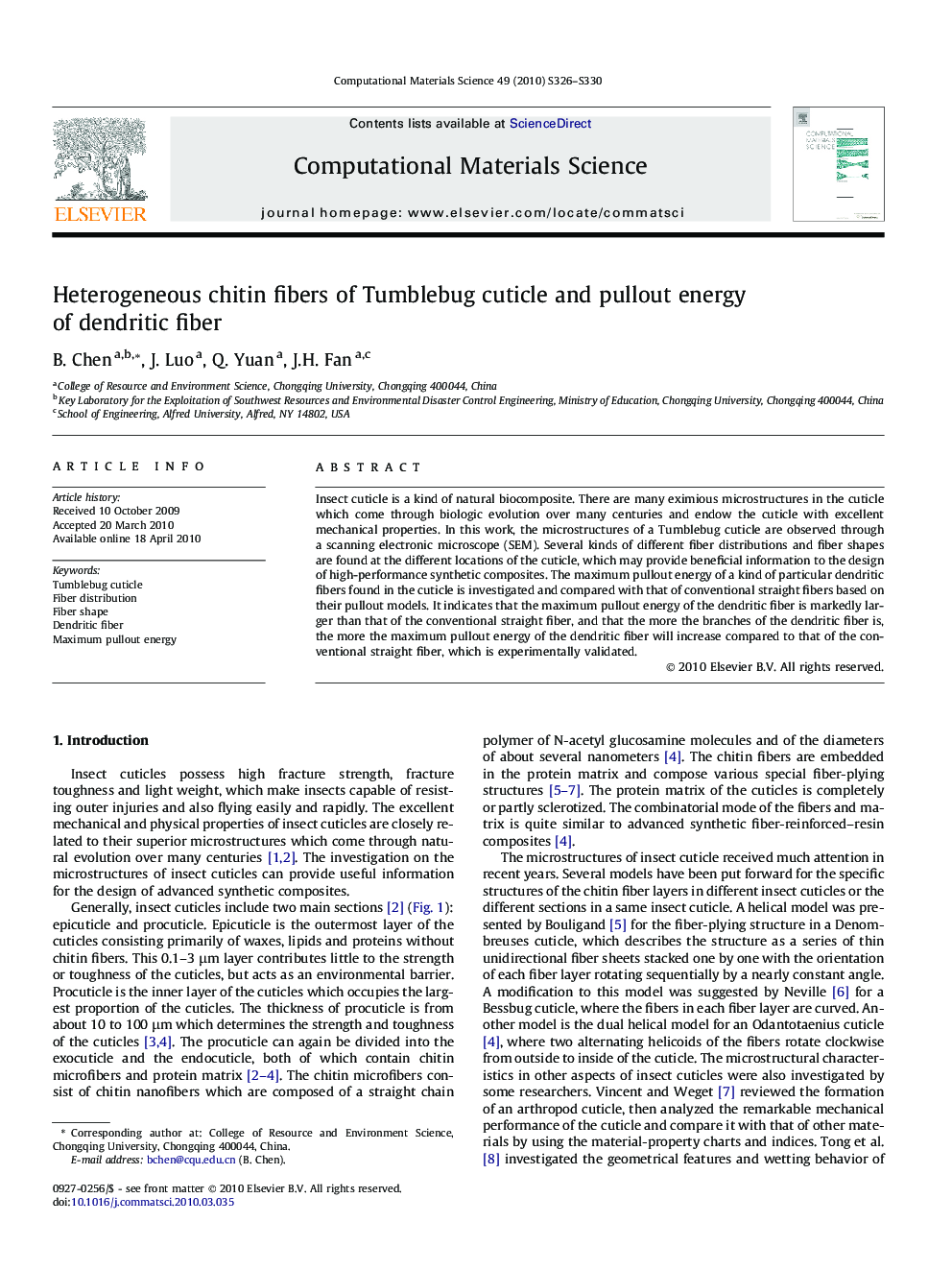| Article ID | Journal | Published Year | Pages | File Type |
|---|---|---|---|---|
| 1562563 | Computational Materials Science | 2010 | 5 Pages |
Insect cuticle is a kind of natural biocomposite. There are many eximious microstructures in the cuticle which come through biologic evolution over many centuries and endow the cuticle with excellent mechanical properties. In this work, the microstructures of a Tumblebug cuticle are observed through a scanning electronic microscope (SEM). Several kinds of different fiber distributions and fiber shapes are found at the different locations of the cuticle, which may provide beneficial information to the design of high-performance synthetic composites. The maximum pullout energy of a kind of particular dendritic fibers found in the cuticle is investigated and compared with that of conventional straight fibers based on their pullout models. It indicates that the maximum pullout energy of the dendritic fiber is markedly larger than that of the conventional straight fiber, and that the more the branches of the dendritic fiber is, the more the maximum pullout energy of the dendritic fiber will increase compared to that of the conventional straight fiber, which is experimentally validated.
